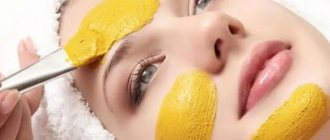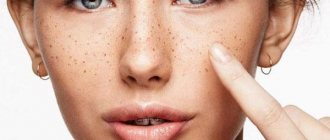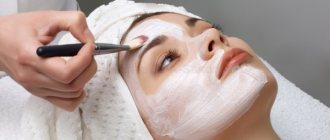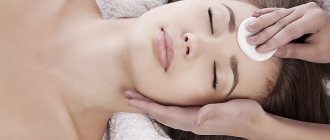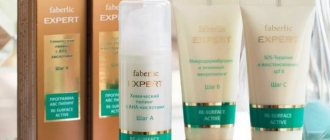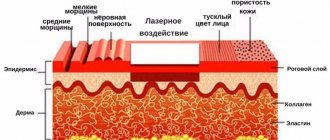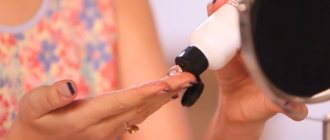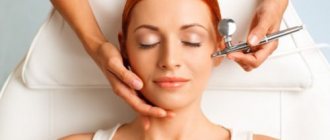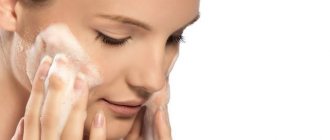One of the most popular services is facial peeling in the salon - this is an effective procedure that accelerates the natural renewal of the skin. Despite the fact that this method of cleansing practically does not injure the skin, it is in no way inferior in effectiveness to classical mechanical facial cleansing.
Peeling cleansing allows you to cope with serious facial defects: wrinkles, age spots, scars and cicatrices, rashes of any origin. The list of indications for using this method is very extensive. It is used:
- For acne;
- For hyperpigmentation;
- For peeling;
- When the skin is contaminated;
- With age-related changes.
The right type of peel can be found for any skin type. This technique can be used for both normal or oily and dry faces. Sensitive epidermis is also not considered an obstacle to this procedure.
The method allows you to exfoliate dead cells, restore the protective properties of the dermis, deeply moisturize the face, eliminate scars, stretch marks and wrinkles. It also has lifting and anti-inflammatory effects.
By constantly applying this cleansing, you can achieve smooth and well-groomed skin and eliminate any facial imperfections.
What is peeling?
What is salon facial peeling? This is a popular, highly effective technique aimed at launching skin renewal mechanisms. During this cleaning method, the upper layers of the epidermis are artificially removed, as a result of which the body's natural protective processes are stimulated. The synthesis of hyaluronic acid, collagen and elastin increases, the skin begins to renew and regenerate.
Peeling allows you to achieve the following effects:
- Increased tone and elasticity;
- Relief smoothing;
- Softening of the skin;
- Improved skin color;
- Getting rid of hyperpigmentation;
- Cleansing pores of sebaceous plugs and dirt;
- Anti-inflammatory effect;
- Smoothing wrinkles, scars, scars.
The effects of the peeling procedure depend on the depth of exposure, as well as on the product used. Let's take a closer look at what types of peeling exist and how they affect the skin.
Precautionary measures
Facial peeling is a seasonal procedure. It is important that after the treatment the treatment site is not exposed to direct sunlight or frosty wind.
The reasons are:
- solar activity increases the risk of hyperpigmentation;
- wind can further injure the skin and slow down the recovery process;
- sudden changes in temperature (from cold to warm and vice versa) negatively affect the condition of blood vessels, as a result of which redness will last longer.
If you do not want or have the opportunity to wait for optimal weather conditions for peeling, a good option would be to carry out the procedure at home.
What types are divided into according to the depth of action?
Peeling in the salon is divided into 3 main types: superficial, medium and deep. As the names suggest, this division depends on the depth of penetration a particular method is designed for.
Let's take a closer look at what each subgroup includes.
Surface
An easy and gentle method, suitable for people without obvious skin problems. Superficial salon peelings affect the granular and stratum corneum of the skin. The procedure is carried out quickly, within 20-30 minutes, the course includes no more than 10 procedures.
After superficial cleansing, light redness, blackheads, and skin impurities are eliminated. It reduces acne, reduces skin oiliness, improves complexion, deeply moisturizes and nourishes, and eliminates early wrinkles.
For serious defects, this method will not demonstrate the desired effect. Having late age-related changes, severe scars and spots, it is worth trying a different technique.
Median
Medium facial peeling is prescribed for clients with serious age-related changes. All anti-aging cleansing methods used in beauty salons are based on this technique. It affects the deep layers of the epidermis, so it can be traumatic.
Medium peeling in beauty salons is carried out for expression and age wrinkles, strong scars, scars, potholes, stretch marks or folds. It is also a preparatory stage for plastic surgery.
Recovery from a midline peel can take up to 3 months.
Deep
The technique of deep facial cleansing is an aggressive, traumatic procedure. This method of cleaning is equivalent to operations. It is performed in a hospital setting, under anesthesia - both local and general. The choice of anesthesia depends on the area being treated and the client’s pain threshold.
The method allows achieving good efficiency. It eliminates deep wrinkles, double chins and jowls, and restores elasticity to tissues. It is recommended for women over 40 years of age who have severe oval sagging.
Restoration of the epidermis after deep cleansing lasts for six months or more.
Stages of a session with a cosmetologist
Any peeling procedure in cosmetology certainly includes the following steps:
- First, steaming is done, after which the solution is rubbed in; burning and swelling are the norm.
- If necessary, anesthesia is given.
- Main impact.
- Removing excess product.
- Antiseptic and soothing treatment.
- Applying bandages, if the deep method is chosen, which are removed after a few days.
- The recovery period, during which it is necessary to protect yourself from the sun and mechanical influences.
burns, redness and swelling remain on the face for some time . That's why you need to sign up before the weekend.
What types are divided into according to the use of funds?
Types of facial peelings in salons are also divided by the type of products used. For facial peels, chemicals, laser or ultrasound, fruit acids, and mechanical devices can be used.
Let's look at each method in detail.
Chemical
Chemical peeling for the face in the salon is carried out using acids, as well as other groups of drugs to exfoliate cells. It is divided into 3 large groups:
- Surface type, involving the application of solutions of various acids. The most commonly used is highly effective lactic acid. The procedure gets rid of the stratum corneum and increases the production of elastin and collagen.
- The middle type is based on the effects of trichloroacetic acid in varying concentrations. This subtype allows you to cope with wrinkles, age spots, potholes, and scars.
- Deep type, which is treated with phenolic mixtures. The procedure is performed in a hospital setting, without anesthesia. After the session, a crust forms on the face, which falls off over time, revealing healthy, clean, rejuvenated skin.
The duration of the procedure depends on the depth of the peeling effect, and varies from 15 to 60 minutes. Recovery after a session can take up to six months: during this time it is necessary to use sunscreen, as well as gentle cosmetics.
Mechanical
In contrast to mechanical cleaning, mechanical peeling is a technique based on the use of special equipment. Like the chemical method, it is divided into three groups: superficial, middle and deep.
- Surface cleaning is carried out using brushes. This is a rotating device with soft and natural bristles. The rotation speed can be adjusted, and special scrubs are used to improve the effect. It is used for mild deficiencies.
- Aluminum crystals are used for medial cleansing. They deeply exfoliate dead cells and accelerate the renewal of the epidermis. Depending on the pain threshold, the method can be performed under anesthesia or without it.
- The deep procedure is carried out using hard brushes rotating at high speed. Since the procedure is painful, anesthesia is used to perform it. This method is indicated for scars, scars, acne spots, and deep wrinkles.
The mechanical procedure can last from 20 minutes to 2 hours.
Physical
The physical facial peeling procedure is also divided into subgroups:
- Ultrasonic, which involves micromassage using an ultrasonic device. Ultrasound waves penetrate into the deep layers of the epidermis, improve blood supply, stimulate metabolism, and trigger cellular renewal.
- Laser, using carbon dioxide or erbium laser. This subtype is performed in a hospital setting, using anesthesia. It eliminates serious age-related changes and deep scars.
Diamond
Diamond dust grinding is an effective way to exfoliate and cleanse the skin. To carry out this procedure, a special apparatus is used. Diamond grinding allows you to remove age spots, redness, and unevenness of the epidermis. It also copes well with inflammatory processes in the pores.
Fruit
Fruit facial peeling is one of the subtypes of dry cleansing that has gained great popularity. It is a delicate cleansing method with virtually no contraindications. Cleansing is carried out using special compositions with acids:
- Lemon;
- Apple;
- Wine;
- Grape;
- Glycolic acid.
The fruit procedure cleanses the pores of sebum, dirt, and dead skin cells. It also fights bacteria, preventing inflammation on the face. The recovery period after the method lasts no more than 3-5 days.
How to choose a peel for your skin
When deciding which cleaning method to choose, focus on the following parameters:
- Your skin type: oily, dry, normal;
- Problems that need to be resolved;
- Contraindications to the procedure;
- The cost of a specific method;
- What does this type of facial peeling provide?
- How will facial peeling be carried out by a cosmetologist?
It is best to choose a specific method together with a cosmetologist. A professional will help you figure out which type of cleansing is best for your skin, and which types you should avoid for your indications. The specialist will also introduce you to the drugs on which the procedure will be carried out and provide information on prices.
Possible side effects
With superficial peeling, there are practically no side effects. In some cases, redness of the skin is possible, which disappears within 3 hours after the end of the procedure.
When the middle layers are affected, redness and peeling of the skin may appear, usually disappearing within 4 to 5 days after the procedure.
Deep peeling is characterized by persistent redness, the formation of crusts on the surface of the skin, as well as a long recovery period - about 2 - 3 weeks.
The number of procedures and the period of their implementation are determined individually for each patient.
How to peel in a beauty salon
Detailed instructions on how to do the procedure depend on the specific technique. Mechanical, physical or chemical peeling in the salon is very different from each other. However, all types of procedures have the same unchanging steps:
- Cleansing. The cosmetologist removes impurities, cosmetics, and sebum from the epidermis. For cleaning, professional products are used to dissolve dirt and grease.
- Opening of pores. The specialist warms or cools the patient's skin to expand the pores, thereby enhancing the effectiveness of the procedure. During this stage, warming masks, hot steam or cryotherapy are used.
- Peeling. The skin is cleansed using the chosen method: cosmetics, fruit acids or special equipment.
- Applying a mask. After cleansing the skin, a special mask is applied to it, selected according to the skin type and aimed at combating specific problems.
- Narrowing of pores. At the end of the session, the skin is covered with a special powder or cream that tightens the pores. This product protects the skin from pollution and bacteria and accelerates regeneration.
The description of the third stage depends on what type of cleaning is used in a particular case. Consult with a cosmetologist to choose the procedure that is right for you: in cosmetology, there is no such thing as “the best peeling.” When choosing a method, focus on the needs of your skin and how it feels.
Are there any contraindications?
Despite the fact that peeling is a safe and non-traumatic method of cleansing, it also has its contraindications. You should refrain from using this method in the following situations:
- Tendency to allergic reactions;
- The presence of herpes and warts on the face;
- Acute stage of acne;
- Taking certain medications;
- Inflammatory diseases;
- Benign and malignant tumors.
Also, many women prefer to refrain from procedures during pregnancy and breastfeeding. This is not a strict contraindication, so when making a decision you should rely only on your feelings.
To find out for sure whether peeling is worth it for your indications, consult a cosmetologist. Experts will tell you in detail what contraindications each procedure option has and will help you choose a cleaning method that is guaranteed to suit you.
Aftercare
- After exfoliation, an important point is the restoration of the protective functions of the epidermis. Moisturizing and toning masks help with this.
- If the impact was moderate or deep, it is recommended to refrain from applying makeup for the first 2-3 days, and replace regular daily care products with special post-peeling products for a week.
- Eliminate the negative effects of ultraviolet rays by using a cream with an SPF filter of 35 or higher. Otherwise, pigmentation cannot be avoided.
How much do the procedures cost?
Before you sign up for the procedure, it’s worth finding out: how much does chemical facial peeling, diamond or mechanical, cost? Exact prices depend on several factors:
- From the city in which the salon is located;
- From the location and level of the cabin;
- From education as a cosmetologist;
- Depending on the type of cleaning and materials used.
Average rates will be displayed in the table below.
| Chemical | 850 rubles |
| Mechanical | 1600 rubles |
| Ultrasonic | 1500 rubles |
| Laser | 6500 rubles |
| Fruit | 1450 rubles |
| Diamond | 2200 rubles |
This is the approximate price for the procedures. You can find out specific prices in the salon of your choice.
Make sure that the final price includes all additional components: facial cleansing, application of a moisturizing mask, powder or cream to close pores. In some salons, these services are calculated separately, which can be an unpleasant surprise when paying.
Photos before and after facial peeling
Scrub peeling for problematic facial skin allows you to achieve excellent results. It gets rid of blackheads, unhealthy complexion, and reduces inflammation. In addition, there are also anti-aging, moisturizing, deep cleansing methods that target specific dermal problems.
You can see what the skin looks like after the procedure in the photos below.
Treatment of rosacea on the face: reviews from readers
Annushka, Moscow Girls, salons in Moscow conduct a free facial care program for “Anti-Cuperosis”. I also advise you to do ultrasound peeling for rosacea. It will replace manual facial cleansing. Carolina, St. Petersburg I do not recommend using deep phenol peeling. I barely got rid of the bubbles. The face burned and was red for a long time. I couldn't go outside for a month. Natalya, Voronezh Phenol peeling is best done superficially or a little deeper if there is a problem face. It hurts, but you look good afterwards.
Elvira, Saratov I liked the ultrasound. The procedure made my cheeks smooth, no blood vessels were visible, and the rashes disappeared.
Kat, Chukotka And I am taking laser peeling from a doctor, although I have visible blood vessels on the wings of my nose. I didn’t notice any deterioration in the blood vessels, but the skin became fresh and the pits after acne were not visible.
